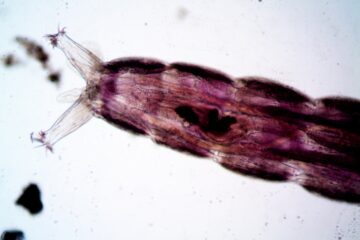![]()
Introduction
According to R. Saferstein, “Forensic Science is the application of science to those criminal and civil laws that are enforced by police agencies in the criminal justice system.” Forensic science, sometimes referred to as criminalistics, applies the knowledge of science to the definition and enforcement of laws. Criminalistics is a branch of forensic science that is involved in the collection, analysis, and interpretation of physical evidence produced by criminal activity. [1]
Forensic science, in its broadest sense, refers to the application of various scientific disciplines to matters that may have legal ramifications.[2] The term forensic (or forensis in Latin) means ‘of the forum, place of assembly. Forensic in modern terms apply to a court or the judicial system. Thus, forensic science is the application of science to criminal and civil matters. Forensic science does not provide an absolute authoritative solution rather it offers objective information on what occurred at the crime scene. It essentially deals with the laboratory examination of different types of physical evidence encountered at the crime scene.
The Application of Forensic Science
The focus of Forensic Science is on the recognition, collection, examination, identification, and evaluation of the physical evidence collected from the crime scene. The evidence that the investigation officers think will be useful in solving the crime is sent to the forensic laboratories. After the tests, the forensic scientist based on his findings presents a report to the court. The application of science in the process for the court refers to the process of forensic science. Forensic science is an essential part of the judicial system as it helps in gathering information relevant to criminal and legal evidence.
Forensic science may prove the existence of a crime, the perpetrator of a crime, or a connection to a crime through the:
- Examination of physical evidence
- Administration of tests
- Interpretation of data
- Clear and concise reporting
- Truthful testimony of a forensic scientist
Forensic science has become an integral part of many criminal cases and convictions, with objective facts through scientific knowledge serving both defense and prosecution arguments. The testimony of forensic scientists has become a trusted component of many civil and criminal cases, as these professionals are concerned not with the outcome of the case; but only with their objective testimony based purely on scientific facts.[3]
History of Forensic Science[4]
- Mathieu Orfila (1787 – 1853): Considered as the Father of Toxicology.
- Alphonse Bertillon (1853 – 1914): Established the first scientific system of personal identification by a series of bodily measurements. It was later replaced by fingerprints in the early 1900s.
- Francis Galton (1833 – 1911): First to study fingerprints and classify them for filing.
- Leone Lattes (1887 – 1954): Discovered that blood can be categorized into four groups.
- Calvin Goddard (1891 – 1955): Determined the comparison of bullets in guns – Ballistics.
- Albert S. Osborn (1858 – 1946): Developed principles of document examination.
- Walter C. McCrone (1916 – 2002): Developed advances in microscopic techniques to solve crimes and analyze evidence.
- Hans Gross (1847 – 1915): Studied and developed principles of a criminal investigation.
- Edmond Locard (1877 – 1966): Had a background in medicine and law, and was the first one to use scientific methods for criminal investigation.
Branches of Forensic Science[5]
Forensic Pathology: This branch is mainly concerned with determining the cause and manner of death. It deals with the examination of the autopsy. Even the time of the death is determined by examination of the autopsy. This information helps in determining one of the crucial elements of a crime scene i.e. the cause of the death. This helps both the law officers in identifying the culprit and the judiciary in declaring sentences.
Forensic Anthropology: This branch deals with identifying people by examination of their bones, soft tissue features, and skeleton where the dead body is beyond recognition or has been mutilated or decomposed. Other characteristics of the deceased like sex, gender, age, and height among other things can be identified with the help of a forensic anthropologist.
Forensic Odontology: It is also known as forensic dentistry. Dentel evidence assists in solving criminal cases. The evidence collected from the teeth can help in identifying the age of the person and sometimes their sex also. This method can also be used in comparison to bite marks. This method also helps in identifying the victim in cases of mass calamities and bombings. Thus, this branch is also very crucial and useful in judicial matters.
Forensic Entomology: It is associated with the study of insects in a criminal investigation. With the help of insects present near the dead body or on the body, they can extract a lot of information. They can also detect the presence of poisons, drugs, and the time of infliction of wounds.
Forensic Toxicology: This branch is associated with the identification of drugs and poisons. The presence of drugs is determined from sample evidence like hair, blood, urine, saliva, etc. This evidence helps in answering medical and legal investigations.
Forensic DNA Profiling: This branch helps in identifying the person by using evidence such as blood, hair, saliva, urine, etc. The DNA profile of each person is unique and thus helps in solving criminal matters. This is also one of the most commonly used methods.
Forensic Ballistics: This branch is associated with firearms. They help infer what weapons were used with the help of gunpowder, bullets, etc. They help in criminal investigation by determining the distance of the shooter, from which angle they had shot, etc.[6]
These were some of the branches that are useful in a criminal investigation.
Laws relating to Forensic Science in India
These laws are mainly focused on forensic evidence but since it is a part of the process of forensic science, these laws are applicable here also:
Section 45 of the Indian Evidence Act enables the court to receive the opinions upon that points, of persons specially skilled in such foreign law, science, art, or as to the identity of handwriting or finger impressions.[7]
Section 46 of the Indian Evidence Act states that facts, not otherwise relevant, are relevant if they support or are inconsistent with the opinion of experts when such opinions are relevant.[8]
Section 53(1) of the Code of Criminal Procedure states that When a person is arrested on a charge of committing an offence of such a nature and alleged to have been committed under such circumstances that there are reasonable grounds for believing that an examination of his person will afford evidence as to the commission of an offence, it shall be lawful for a registered medical practitioner, acting at the request of a police officer, not below the rank of sub-inspector, and for any person acting in good faith in his aid and under his direction, to make such an examination of the person arrested as is reasonably necessary in order to ascertain the facts which may afford such evidence and to use such force as is reasonably necessary for that purpose.[9]
Section 27 (1) of the Prevention of Terrorism Act states that When a police officer investigating a case requests the Court of a Chief Judicial Magistrate or the Court of a Chief Metropolitan Magistrate in writing for obtaining samples of handwriting, finger-prints, foot-prints, photographs, blood, saliva, semen, hair, voice of any accused person, reasonably suspected to be involved in the commission of an offence under this Act, it shall be lawful for the Court of a Chief Judicial Magistrate or the Court of a Chief Metropolitan Magistrate to direct that such samples be given by the accused person to the police officer either through a medical practitioner or otherwise, as the case may be.[10]
Significance of Forensic Science
Forensic Science is one of the crucial elements of a criminal investigation. Investigating officers are involved in the collection of evidence, but the analysis and examination that helps in solving the crime are only done by a forensic scientist. The facts uncovered by a forensic scientist help the court in decision making and also influences their decision. For example, in cases of murder, the autopsy done by a forensic scientist helps in identifying the victim. It sometimes also gives clues or evidence against the culprit. What kind of weapon was used or the cause of the death can also be identified with the help of forensic science. Even in cases like robbery physical evidence might be useful for DNA testing or fingerprint analysis. This further helps in identifying the thief. Thus, forensic science is useful in cases like robbery and also in major cases like murder, rape, etc.
Conclusion
Forensic Science refers to the application of science in the fields of criminal and civil law. Forensic science is a useful tool in any investigation. It is like a piece of the puzzle without which an investigation more particularly a criminal investigation is incomplete. The reports of a forensic examination are presented before a court of law. This report helps the court in decision-making. Also, the reports submitted by a forensic lab helps aids the investigating officer in solving the crime. Different branches of forensic science help in a criminal investigation. Many times more than one branch has to work towards obtaining a result.
References:
[1] Donald C. Lehman, Introduction to Forensic Science, 25(2) CLINICAL LABORATORY SCIENCE JOURNAL 107, 107-108 (2012).
[2] Volume 6 JULIA A. DOLAN, HANDBOOK OF ANALYTICAL SEPARATIONS 873.
[3] What is Forensics, CRIME SCENE INVESTIGATOR, https://www.crimesceneinvestigatoredu.org/what-is-forensic-science/.
[4] Forensic Science plays a pivotal role in the Legal System, INCOGNITO FORENSIC FOUNDATION, https://ifflab.org/the-importance-of-forensic-science-in-criminal-investigations-and-justice/.
[5] MAX M. HOUCK AND JAY A. SIEGEL, FUNDAMENTALS OF FORENSIC SCIENCE 4-6 (2nd edition).
[6] Shruti Nadkarni, Significance of Forensic Science in Criminal Investigation, JUS DICERE, https://www.jusdicere.in/significance-of-forensic-science-in-criminal-investigation/#_ftnref12.
[7] The Indian Evidence Act, 1872, § 45, No. 1, Acts of Parliament, 1872 (India).
[8] The Indian Evidence Act, 1872, § 46, No.1, Acts of Parliament, 1872 (India).
[9] The Code of Criminal Procedure, 1973, § 53(1), No. 2, Acts of Parliament, 1974 (India).
[10] The Prevention of Terrorism Act, 2002, § 27(1), No. 15, Acts of Parliament, 2002 (India).



0 Comments